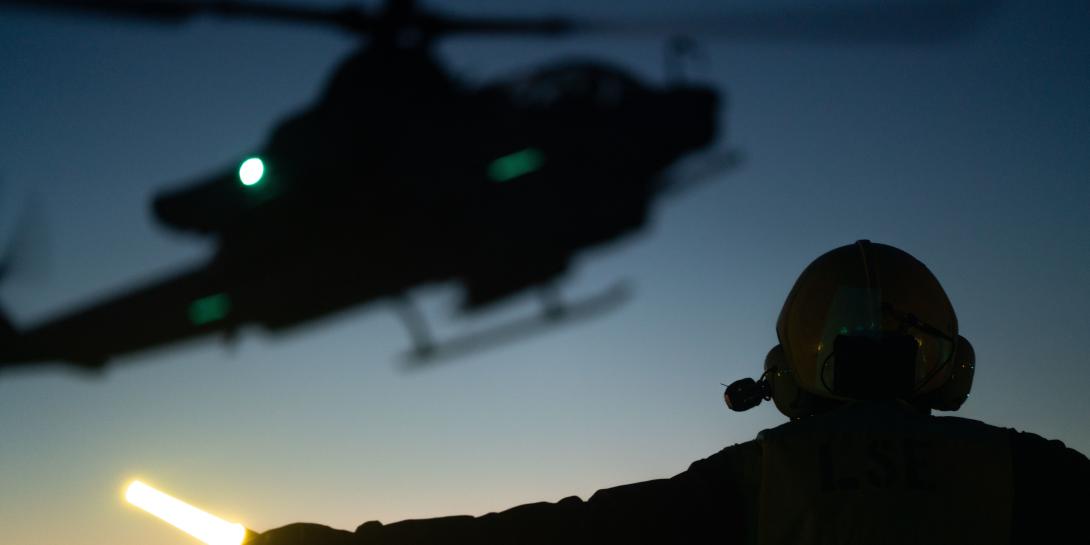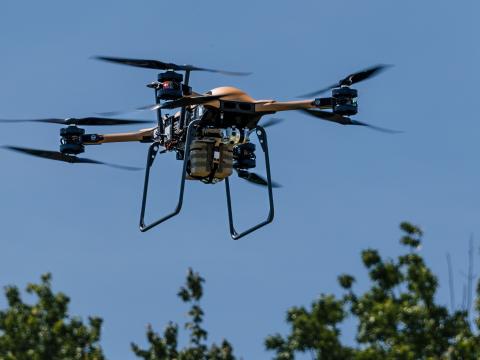Marines Aim for Partner Interoperability
As part of its transformation back to a maritime force, the U.S. Marine Corps is focusing on greater integration with naval and joint forces. This will require information technology systems that are extremely mobile, can work anywhere and operate in a denied environment, according to the Marine Corps deputy chief information officer (CIO).
Daniel Corbin, who is also the technical director of Marine Corps command, control, communications and computers (C4), told the audience at the AFCEA Northern Virginia Chapter’s Naval IT Day 2021 held in October that the Corps’ responsibility is not to fight its way into an anti-access/area denial environment. “We live there,” he declared. The Marine Corps has forces already stationed in the potential conflict theaters, so it must be able to move within that theater with smaller units and more efficiently. Those smaller units would be mobile and able to collect information from various locations for distribution to others.
To meet this and other challenges, the Marine Corps is developing its force of the future with a sense of urgency, Corbin stated. That encompasses personnel, equipment, processes and modernization, he emphasized.
At the top of the list are naval integration and joint integration, he declared. “We have to be able to communicate, maneuver and all the other things it takes for a joint force to work together.” Although interoperability has been a buzzword for a long time, it hasn’t been always achieved.
Corbin allows that the Marine Corps will be able to collect information in what is called the weapons engagement zone. All of the adversaries in that zone—more than just one—have weapons that can attack anything possessed or wanted by the United States. Being able to operate in that space at any time requires the ability to move, so mobility and situational awareness rank highly among Marine Corps priorities.
And that mobile gear must be easily moved, he continued. This means a reduced setup and breakdown time and a smaller logistical footprint. “We have to be able to do something and then move when required to do so,” Corbin stated.
Overall, Marine forces will be smaller units that can sense, communicate, be mobile and engage the enemy when directed, he continued. And, the Corps will be an integral part of the joint force sea denial capability, as forces are distributed throughout the area of interest to maintain open lanes of communication for allies and deny the same for adversaries.
One challenge to exploiting enterprise solutions based in the cloud is that the tactical environment may not offer the desired connectivity, Corbin points out. A niche capability such as identity management must be taken into the environment when accessing the cloud doesn’t work. “When we talk about enterprise services, we say these enterprise services have to work everywhere—not just in Washington, D.C., Okinawa, Camp Pendleton or Hawaii,” he stated. “What you have to do is engineer a solution that allows it to be disconnected. If you haven’t done that, then you haven’t satisfied the intent.”
Corbin noted that some providers may be too optimistic about the capabilities they can provide the Corps. “What we’re waiting for in some cases is for somebody to say, ‘You’ve given us an impossible task.’ Once we know it’s an impossible task then we’ll move on, but right now nobody’s told us that, and everybody keeps pursuing it and saying, ‘Yeah, we got it for you.’”




Comments